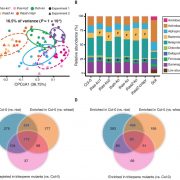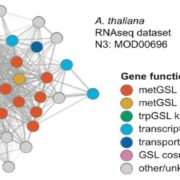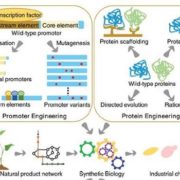Update: How to eat an idea (and translate genes to products)
 Plant biologists are critical players in the pursuit of crop enhancement and other real-world solutions to today’s pressing problems, yet few of us know how to translate our research into tangible economic or social benefits. This useful and engaging article by Jonathan Napier walks us through the many steps and obstacles along the journey from an idea to product, drawing on the author’s and others’ experiences in developing plants enriched in omega-3 long chain polyunsaturated fatty acids, which are beneficial to human health but a diminishing natural resource. One of their first challenges lay in the fact that, unlike some engineered traits, several genes had to be introduced into plants to complete the biosynthetic pathway, which intersects with many other metabolic pathways. But such obstacles are familiar to most of us. The rest of the article covers the steps that must be followed to move out of the lab and into the market, such as building a compelling economic proposal to secure funders and investors. The long timeframe of such projects, and the complex and expensive regulatory landscapes for field trials and biosafety assessment provide additional challenges and require expertise beyond those of most researchers. The author also provides a fascinating look at how to navigate the opaque world of intellectual property (IP). This article is part of the forthcoming Plant Physiology Focus Issue on Numeracy, Realism, and Relevance, which will be highlighted with a panel discussion in mid-July. More details coming soon! (Summary by Plant Teaching @PlantTeaching.bsky.social) Plant Physiol. 10.1093/plphys/kiaf178
Plant biologists are critical players in the pursuit of crop enhancement and other real-world solutions to today’s pressing problems, yet few of us know how to translate our research into tangible economic or social benefits. This useful and engaging article by Jonathan Napier walks us through the many steps and obstacles along the journey from an idea to product, drawing on the author’s and others’ experiences in developing plants enriched in omega-3 long chain polyunsaturated fatty acids, which are beneficial to human health but a diminishing natural resource. One of their first challenges lay in the fact that, unlike some engineered traits, several genes had to be introduced into plants to complete the biosynthetic pathway, which intersects with many other metabolic pathways. But such obstacles are familiar to most of us. The rest of the article covers the steps that must be followed to move out of the lab and into the market, such as building a compelling economic proposal to secure funders and investors. The long timeframe of such projects, and the complex and expensive regulatory landscapes for field trials and biosafety assessment provide additional challenges and require expertise beyond those of most researchers. The author also provides a fascinating look at how to navigate the opaque world of intellectual property (IP). This article is part of the forthcoming Plant Physiology Focus Issue on Numeracy, Realism, and Relevance, which will be highlighted with a panel discussion in mid-July. More details coming soon! (Summary by Plant Teaching @PlantTeaching.bsky.social) Plant Physiol. 10.1093/plphys/kiaf178









